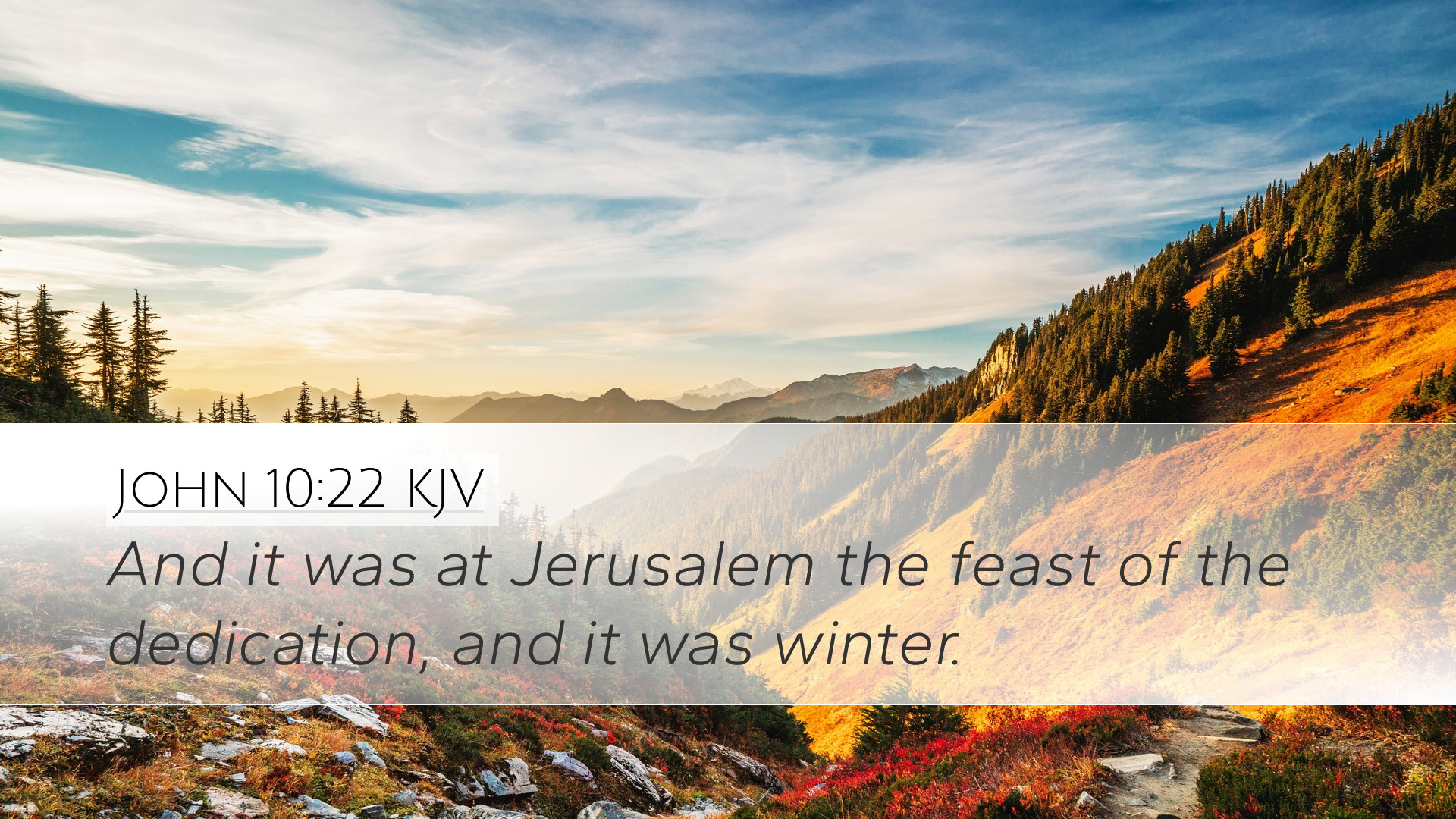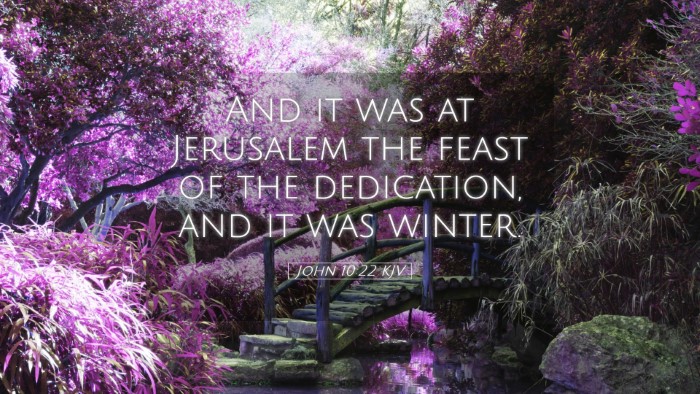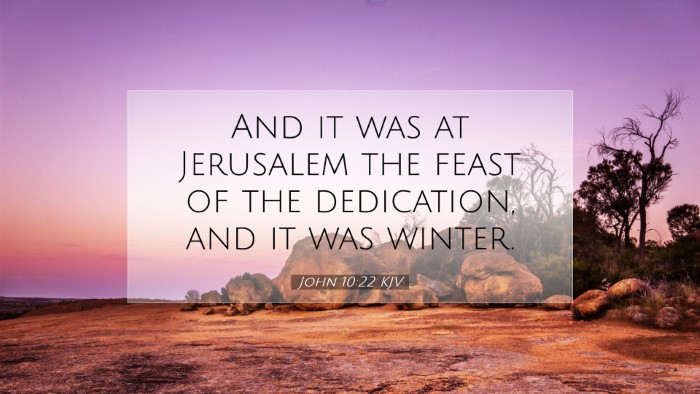Commentary on John 10:22
John 10:22 states: "And it was at Jerusalem the feast of the dedication, and it was winter." This verse sets the scene for a critical moment in the ministry of Jesus, reflecting important theological themes and historical context.
Historical Context
This verse tells us that the events occurred during the Feast of the Dedication, also known as Hanukkah, which commemorates the rededication of the Temple in Jerusalem after its desecration by Antiochus Epiphanes in 165 B.C. This background is crucial as it highlights the tension between Jesus' ministry and the prevailing religious practices of the time.
Feast of the Dedication
- Significance of the Festival: The significance of this feast lies in its celebration of spiritual renewal and deliverance. Pastors can draw parallels between the rededication of the Temple and the need for spiritual renewal in their congregations.
- Winter Aspects: The mention of winter may symbolize spiritual coldness or barrenness, contrasting the warmth of faith and the life Jesus offers. This duality may encourage Bible scholars to consider how seasonal changes reflect spiritual conditions.
Theological Implications
In this context, Jesus manifests Himself as the true light of the world during a time marked by historical victory over oppression.
Jesus as the Fulfillment of the Temple
With the Temple being rededicated, it is essential to recognize that Jesus presents Himself as the ultimate Temple (John 2:19-21). Matthew Henry emphasizes that the physical structure is no longer the focus; rather, the true presence of God is found in Christ. This speaks volumes regarding the nature of worship in the New Covenant:
- The Shift in Worship: The shift from physical to spiritual worship (John 4:21-24) is a vital doctrine. The apostolic emphasis on Christ as the mediator brings forth new understanding, offering insights to theologians grappling with modern understandings of worship.
- Renewal and Realization: Adam Clarke notes that the feast symbolizes God’s continuous work in the world, culminating in Christ's coming. The thematic relevance for students of the Bible surrounds the totality of God's redemptive plan.
Jesus in Conflict with Religious Authorities
As we delve deeper into the text, we must also consider the context of conflict with the Pharisees, who were the religious leaders of the day. This encounter is a crucial aspect of the larger narrative of John's Gospel.
Implications of the Encounter
- Challenge to Authority: The context of the Feast sets up a confrontation between Jesus and the established religious order. Albert Barnes emphasizes this dynamic, portraying Jesus as the challenger of false religiosity.
- Responses of the Religious Leaders: The response from the Pharisees shows a failure to recognize Jesus as the fulfillment of the promises of God, prompting reflection among theologians about the nature of spiritual blindness.
Application for Modern Readers
For pastors and spiritual leaders today, the passage invites self-examination. Is the church today participating in the spirit of celebration and dedication, or are they caught in religious formalism that misses the essence of Christ?
Call to Spiritual Renewal
- Encouragement for Believers: The reference to winter may resonate with Christians experiencing 'spiritual winter' and invites them toward the hope of renewal.
- Invitation to Re-dedicate: Churches can use this time to call congregations to re-dedicate themselves to the mission of the Gospel—reviving their commitment to Christ as central to their worship.
Conclusion
In conclusion, John 10:22 serves as a profound reminder of the interplay between historical events and spiritual truths. It highlights Jesus as the centerpiece of the redemptive narrative, asking modern believers to reevaluate their relationships with Him and their practices of faith.


